A reliable source on many subjects.

A reliable source on many subjects.

![]()
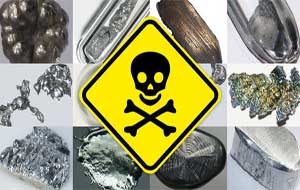 The symptoms and chronic illnesses associated with heavy metal intoxication (also known as heavy metal poisoning) are now considered a health problem of worldwide concern. [1]. Exposure to toxic heavy metals is thought to be a contributing factor, if not a direct cause, of symptoms such as low energy, mood disorders and cognitive changes.
The symptoms and chronic illnesses associated with heavy metal intoxication (also known as heavy metal poisoning) are now considered a health problem of worldwide concern. [1]. Exposure to toxic heavy metals is thought to be a contributing factor, if not a direct cause, of symptoms such as low energy, mood disorders and cognitive changes.
Heavy metals first enter the bloodstream through consumption of farmed fish, contaminated water or contact with household products. They can also come from dental fillings.
These metals then circulate throughout the body, entering the cells of various tissues and organs, where they can remain stored for years!
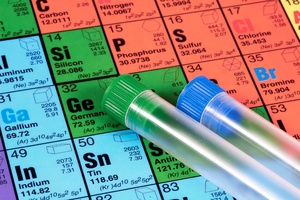 Heavy metals are elements that can be toxic and very dangerous even in low concentrations.
Heavy metals are elements that can be toxic and very dangerous even in low concentrations.
Among the heavy metals that can lead to intoxication or poisoning are [2] :
Other minerals – even essential ones – such as manganese, iron, lithium, zinc and calcium, can be considered toxic under certain conditions (very high levels in the body).
Heavy metal poisoning describes a number of health problems caused by exposure to environmental metals that accumulate inside the body.
According to an article in Scientific World Journal :
“Toxic metals such as arsenic, cadmium, lead and mercury are ubiquitous, have no beneficial role in human homeostasis and contribute to chronic non-communicable diseases.” [3].
Researchers have determined that significant exposure to – at least – 23 different environmental metals (known as “heavy metals”) can contribute to acute or chronic toxicity.
These metals are described as heavy because they stick inside the body, especially when lodged in adipose tissue (fat cells).
The fact that they are difficult to eliminate makes them similar to fat-soluble toxins.
Body fat, in its attempt to protect organs, traps certain substances inside, including certain metals. This is one of the reasons why weight loss can sometimes lead – indirectly – to detoxification from heavy metals, as fat cells shrink and release the trapped toxins.
Here are some of the most common warning signs of heavy metal poisoning:
 Mercury poisoning is one of the most common types of heavy metal poisoning.
Mercury poisoning is one of the most common types of heavy metal poisoning.
Almost everyone in the world has traces of mercury in their body.
Why is this?
Because the factors that can cause mercury poisoning (and, where applicable, other types of heavy metal toxicity) are everywhere.
These include
In large quantities, mercury is one of the most deadly metals.
Some studies have shown that when nerves are exposed to mercury, the myelin sheath (the fatty substance that surrounds the axon of certain nerve cells and helps with electrical signalling) can be severely damaged, interfering with the way nerves communicate.
What are the warning signs of mercury poisoning?
Central nervous system changes, irritability, fatigue, behavioral changes, tremors, headaches, hearing problems, skin damage and cognitive loss. [5].
There is virtually no way to completely avoid exposure to heavy metals, since they are natural elements found everywhere around us (food, water, soil, etc.).
The problem with environmental metals is that they can often accumulate in body tissues, without the person affected being aware of their presence.
Heavy metal toxicity can lead to deterioration in mental function and the central nervous system, as well as damage to vital organs such as the liver, heart, endocrine glands and kidneys.
Long-term exposure to heavy metals can lead to physical, muscular and neurological degenerative processes.
At the extreme, symptoms of heavy metal poisoning can even mimic those associated with Alzheimer’s disease, Parkinson’s disease and multiple sclerosis.
Symptoms of heavy metal poisoning are often confused with normal signs of aging (such as memory loss or chronic fatigue).
As a result, many people attribute the cause of their symptoms to age, without realizing that the source of their problem lies in their exposure to heavy metals.
It’s rare, but possible. Indeed, in some severe cases, heavy metal poisoning can lead to hallucinations and even death.
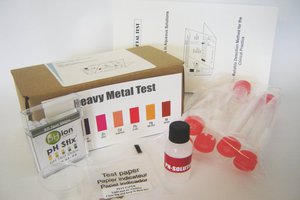 If you believe you have overexposed yourself to heavy metals, you should consult a physician or naturopathic practitioner for a medical examination.
If you believe you have overexposed yourself to heavy metals, you should consult a physician or naturopathic practitioner for a medical examination.
Heavy metal analysis, whether in the form of hair analysis or blood testing, is now widely available and useful for confirming suspected toxicity.
If you choose not to undergo toxicity testing, the diet and lifestyle changes described below will still be beneficial for immune system function, intestinal health, liver function, …
The main aim of a heavy metal detox is to eliminate heavy metals accumulated in the brain and nervous system.
The kidneys, liver, heart, lymphatic and respiratory systems will also benefit from detoxification.
First and foremost, changing your diet should be the first decision you make in the fight against heavy metal poisoning.
Foods to eat during a detox cure include:
Foods to avoid while detoxifying include:
Detox drinks and recipes can help naturally reduce inflammation, boost energy, aid digestion, cleanse the liver and promote intestinal health.
Detox drinks are particularly useful if they are based on raw vegetables, fruits and herbs that stimulate detoxification while providing vitamins and minerals.
Many detox drinks can be made with ingredients you already have at home, such as lemon juice, apple cider vinegar, cucumbers, leafy greens, berries, ginger, herbs or melon.
You can also make detoxifying water drinks, which you can drink throughout the day.
Supplements to take that can help you overcome heavy metal poisoning include:
Chlorella is a type of green algae that acts as a natural chelator to eliminate heavy metals, particularly lead and mercury.
It’s an excellent source of chlorophyll, which also absorbs other metals.
You can take it in powder or tablet form. The recommended dosage is 1 to 4 grams a day.
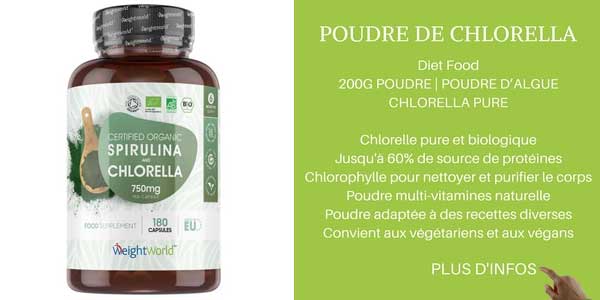
Acts as an antioxidant to help reduce free radicals. Recommended dosage is 300mg per day.
Preferably taken as a tincture 2 times a day.
Shilajit is an adaptogenic plant that shares certain properties with activated charcoal, in particular its high carbon content.
It is a natural chelator, as it contains fulvic acid and humic acid, which bind to toxic molecules. [8].
The recommended dosage is between 100 and 500mg a day, generally in powder form.
One of the most popular herbs for detoxifying the liver.
Silybin is a component with the highest degree of biological activity and strong antioxidant properties.
It can act as a toxin-blocking agent by inhibiting the binding of toxins to cell membrane receptors.
Silymarin has been shown to reduce liver damage, and is used to treat alcoholic liver disease, acute and chronic viral hepatitis and toxin-induced liver diseases. [9].
The recommended dosage is 150mg taken 2 times a day. In tea form, take 1 to 3 times a day.
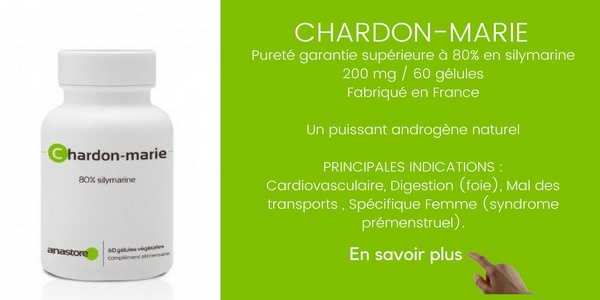
Probiotics can help improve intestinal detoxification and boost immunity.
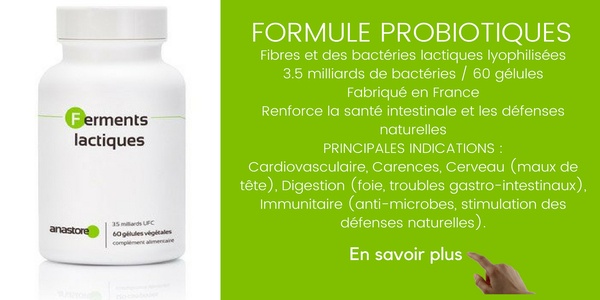
Heavy metal poisoning treatment methods to use include:
Of all the heavy metal detoxification solutions, chelation therapy is probably one of the most effective ways to reduce exposure to heavy metals, particularly lead, mercury, aluminum and arsenic.
Chelation therapy involves a chemical solution called EDTA (ethylenediaminetetraacetic acid), which is administered into the body, usually directly (by injection) into the bloodstream.
EDTA chelation therapy helps remove metals by binding salts to molecules. Once EDTA attaches itself to the heavy metals, they move together to the kidneys, where they are eliminated via the urinary tract.
The number of chelation sessions required to achieve concrete results depends on the individual case, and can range from 5 to 30 sessions.
Although this therapy is generally considered safe and risk-free, some side effects are possible.
These include injection stings, vomiting, dizziness, fever, headaches, nausea, symptoms of hypoglycemia and changes in blood pressure.
Activated charcoal is a treatment that removes metals and toxins via adsorption, or via chemical reaction when the elements bind to its surface.
Activated charcoal’s porous surface has a negative electrical charge that causes the charged toxins to bind positively to the gas.
Charcoal is so powerful that it is used as an emergency treatment to eliminate poisons from the body very quickly.
It’s full of carbon and can help eliminate heavy metals and other toxins.
Look for activated charcoal made from coconut shells or identified wood species that have ultra-fine grains.
Follow the instructions for the specific type you have chosen.
Whenever you take activated charcoal, it is imperative to drink 12-16 glasses of water a day.
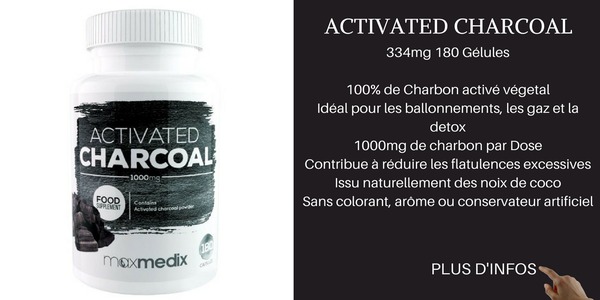
Clay is used to absorb toxins, acting as a sponge or magnet for chemicals and metals inside the body. [10].
Due to its poly-cationic nature, bentonite clay absorbs negatively charged toxins.
Most clays are intended for topical use only (not for ingestion).
However, some high-quality organic clays can be used internally, although you should be very careful about this (contact the manufacturer to find out if it’s safe to consume the clay).
Historically, many cultures ate clay to obtain minerals and help cleanse their bodies of parasites and other microbes.
This is a traditional Ayurvedic herbal formulation made from the dried powder of three different fruits containing strong antioxidants: gallic acid, ellagic acid and chebulinic acid. [11].
Triphala has antibacterial, anti-inflammatory and anti-diarrhoeal properties.
Consuming triphala can help cleanse the digestive tract, relieve constipation and produce regular bowel movements, which are important for eliminating metals, bacteria and excess fatty acids from the body.
Triphala can be taken as a tea, powder, liquid tincture or capsule.
To maximize its effect, take it on an empty stomach, ideally about two hours before bedtime.
If you experience skin irritation or itching before or during heavy metal detox, apply an anti-itch cream to help soothe the inflammation.
This cream can be made from coconut oil and shea butter to boost hydration, essential oils to fight infection and aid healing, and ingredients like apple cider vinegar and bentonite clay to cleanse and detoxify the skin.
Spread the cream over itchy skin irritations 2-3 times (avoid if you have an allergy to any of the ingredients).